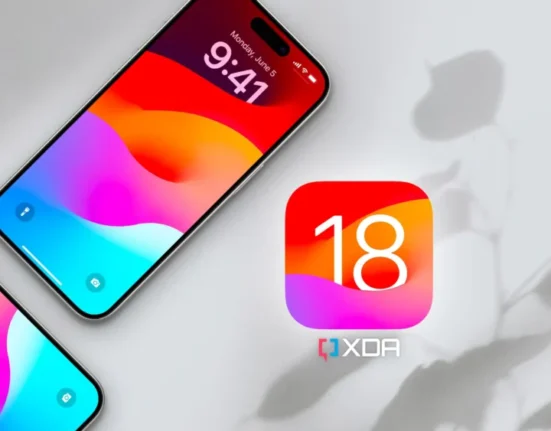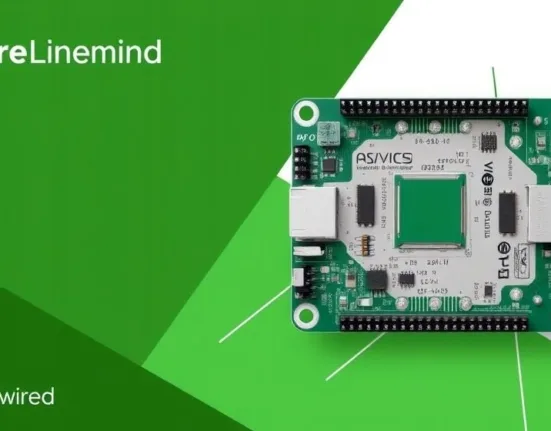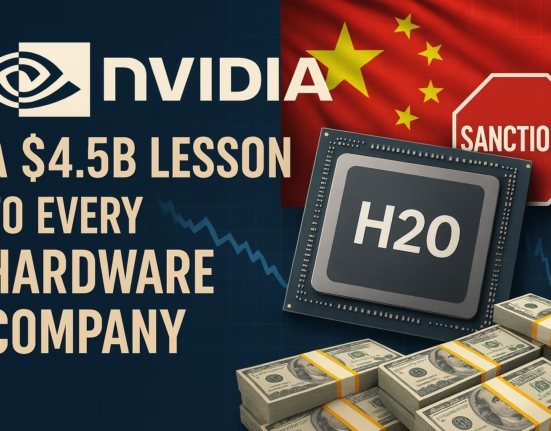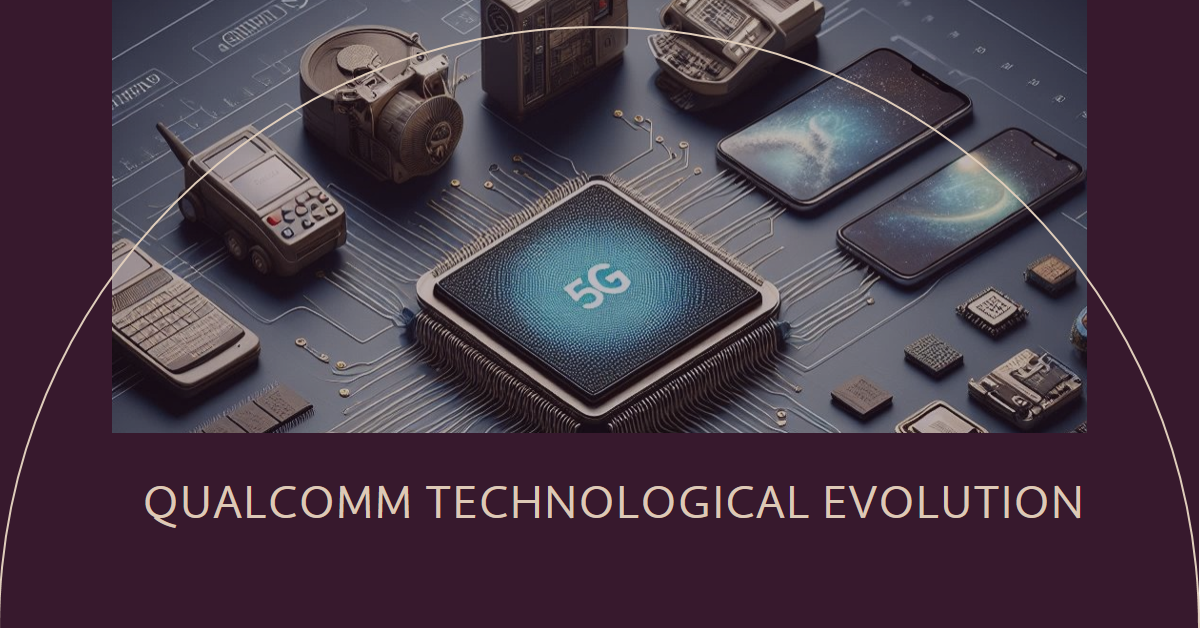Nvidia’s $4.5B Lesson to Every Hardware Company: You Can’t Out-Innovate Sanctions
- by Abhinav Kumar
- 13 June 2025
- 4 minutes read
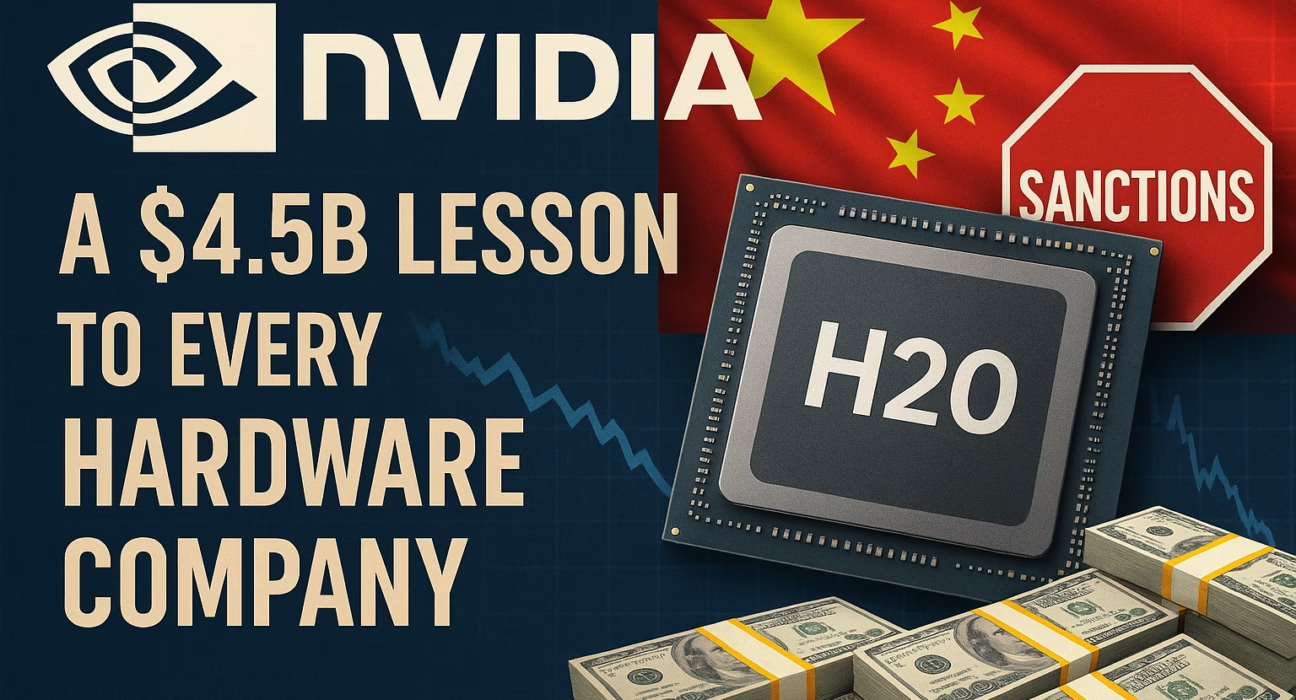
A few months ago, Nvidia quietly revealed a $4.5 billion hit to its books. Not because its chips failed in the lab. Not because customers walked away. But because the H20, a chip built to survive U.S. sanctions in China, was suddenly made obsolete by an even tighter wave of regulations.
In a Q1 FY2026 SEC filing, Nvidia acknowledged a $5.5 billion write-down, salvaging just $1 billion worth of reusable components like high-bandwidth memory. The remaining inventory—mostly H20 chips—was scrapped. The market called it a write-off. But inside boardrooms across the industry, it’s being seen as something else entirely: a blueprint for what not to do in a geopolitically volatile hardware landscape.
When Nvidia Tried to Redesign Around Sanctions with H20
Nvidia hasn’t just been engineering chips in recent years — it’s been engineering around politics.
When the U.S. banned the export of its high-performance A100 and H100 GPUs to China, Nvidia didn’t walk away from its most strategic market. Instead, it introduced the H20 chip — specifically designed to just comply with Washington’s evolving AI chip export bans.
The H20 launched quietly in late 2023. No keynote slides. No glossy PR. Because it wasn’t made to lead — it was made to legally survive.
This was a bet — that Washington’s red lines wouldn’t move too soon.
They did.
What Nvidia Sacrificed in the H20 ??
So what did Nvidia give up in the name of compliance?
Here’s a side-by-side comparison:
| Feature | H100 (Global) | H20 (China-Bound) |
|---|---|---|
| Architecture | Hopper | Modified Hopper |
| Memory (HBM) | 80 GB | 96 GB |
| Memory Bandwidth | ~3.35 TB/s | ~1.8 TB/s (~46% less) |
| NVLink Interconnect | 900 GB/s | ~600 GB/s (~33% reduced) |
| PCIe Interface | PCIe Gen 5 | PCIe Gen 4 |
| Peak FP8 Performance | 4000 TFLOPs | ~2000 TFLOPs (estimated) |
| Thermal Design Power | ~700 W | ~350–400 W (varies) |
| Export Scope | Unrestricted (pre-ban) | China-only (before latest export update) |
Disclaimer: Nvidia has never officially published the full technical specs for the H20. These figures are based on teardown reports, analyst notes, and industry leaks.
How did China reacted ?
China Didn’t Wait to React — It Built-WireUnwired
While Nvidia was writing off billions in unused inventory, China wasn’t protesting the sanctions — it was designing around them.
By the time the U.S. tightened export controls on AI chips again in April 2024, Chinese chipmakers were already catching up — in hardware capability and LLM performance.
The Nvidia H20 chip sanctions may have backfired — fast-tracking China’s shift to self-reliant AI chip infrastructure.
Huawei’s Surprise: Ascend 910C
The Huawei Ascend 910C, an upgraded version of the 910B, arrived quietly — but with clear intent.
- Built on a 7nm+ node, it sidestepped the need for EUV-based 5nm or smaller nodes, relying on mature DUV processes.
- It fused two 910B-class dies — mirroring how Nvidia scales performance with multi-GPU setups.
- According to Chinese benchmarks, it could train GPT-3-class models on par with Nvidia’s A100.
“Huawei’s latest AI chip nearly matches Nvidia’s A100 — all without a single American transistor.”
— South China Morning Post
China’s AI Stack Became More Self-Reliant
- DeepSeek-V2 was trained entirely on domestic AI compute infrastructure — a milestone that seemed years away just last year.
- Alibaba and Tencent accelerated their support for local chip startups: Cambricon, Biren, and Moore Threads — all focused on AI accelerator design.
- Morgan Stanley forecasts China could reach 82% AI chip self-sufficiency by 2027.
“Every U.S. ban is now treated as a product roadmap in China.”
— Anonymous executive, quoted by Nikkei Asia
“The West tried to slow China’s AI progress. Instead, it may have accelerated self-reliance.”
— WireUnwired Analysis
What should Other Companies learn from Nvidia’s massive write-off ?
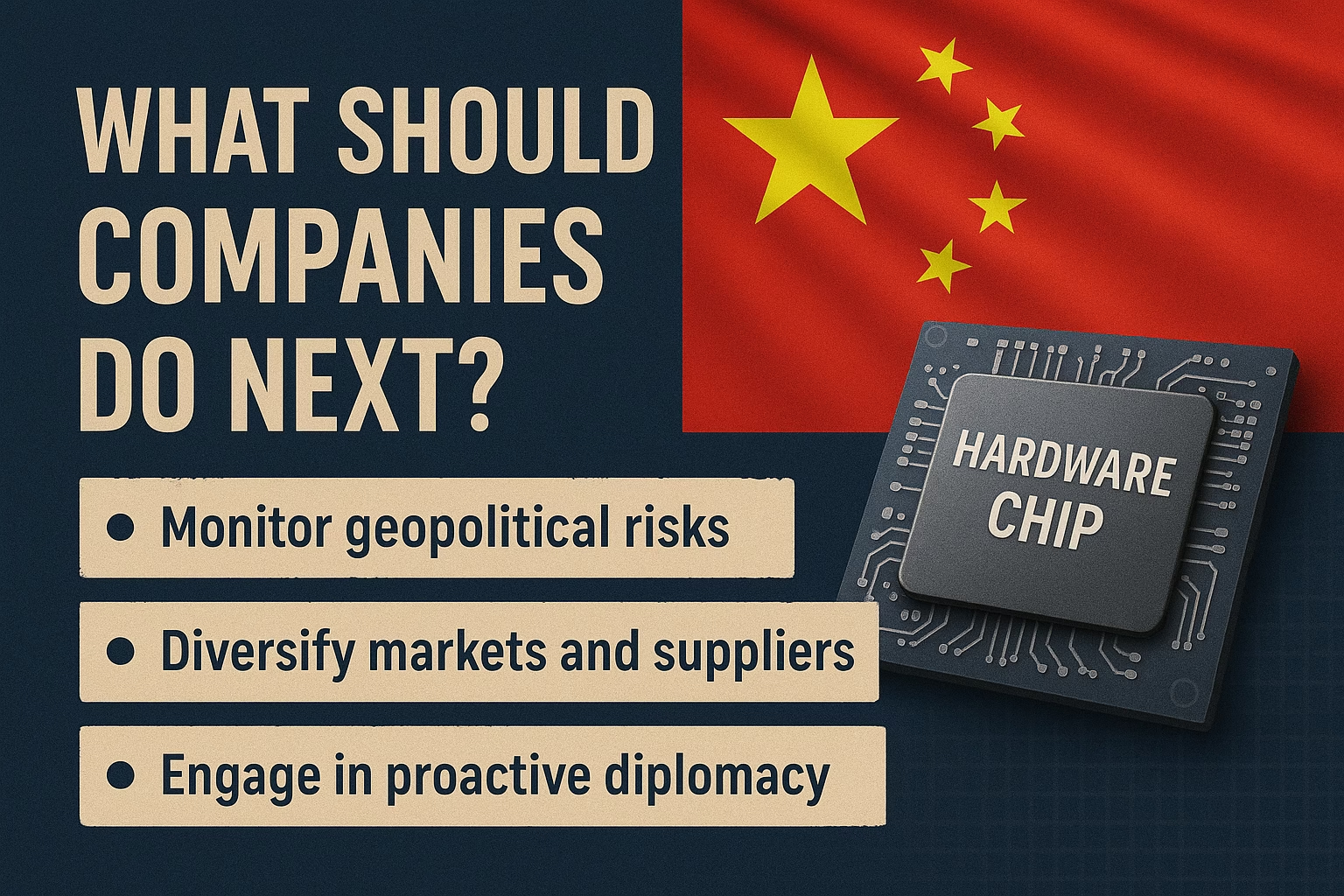
While headlines focused on what Nvidia lost — $4.5 billion in chips, China as a growth engine, and maybe a bit of moral high ground — the real question is:
What now for chipmakers navigating geopolitical policies?
Because this won’t stop at Nvidia.
1. Build Policy-Aware Product Pipelines
The “one chip fits all markets” idea is dead.
Companies must design parallel product tracks, customized not just by performance, but by legal and regional export laws.
Think emissions laws in the car industry:
You can’t sell the same car in Delhi, Berlin, and California without modifications.
The same now applies to AI chip exports.
2. Work With Governments, Not Around Them
Stop being reactive. Start being strategic.
- Engage early in AI policy and export regulation discussions
- Lobby not just for leeway, but predictability
- Create policy-response teams as robust as architecture teams
Because the worst restriction is not the harshest one — it’s the one that comes unannounced.
3. Design for Redundancy — Technically & Commercially
Nvidia’s H20 gamble shows what happens when you target just one market.
If the U.S. bans exports and China blocks imports, your chip needs a Plan B —
either a secondary market or a modular fallback architecture.
In a geopolitical world, flexibility is no longer a luxury — it’s a core design principle.
Conclusion: Policy Stability > Performance Margins
For Nvidia, the surprise wasn’t just that its chips got banned.
It was when.
The H20 was already in production. Distributors were set. Shipments had begun. And then — with a single U.S. government update — the entire roadmap, yield, and logistics plan collapsed.
“The U.S. government has signaled that restrictions will continue evolving — unpredictably.”
— Bloomberg Intelligence
Companies can build for latency, bandwidth, thermal limits — but not for regulatory volatility.
In this case, Nvidia bet on a loophole holding longer than it did.
It didn’t.
In an age where chips are geopolitical assets, building fast is no longer enough —
You need to build with foresight.
And foresight today doesn’t just mean 3nm nodes or trillion-parameter models.
It means reading the room — not just the datasheet.
Discover more from WireUnwired Research
Subscribe to get the latest posts sent to your email.






